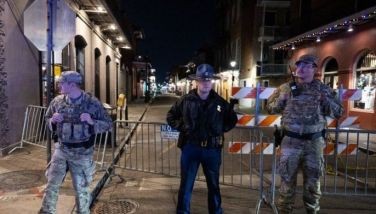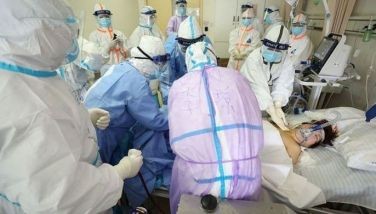BY THE NUMBERS: The atomic bombing of Nagasaki
The Japanese city of Nagasaki marked yesterday the 70th anniversary of the US atomic bombing on Aug. 9, 1945, three days after the first atomic bomb was dropped on Hiroshima. Japan surrendered on Aug. 15, ending World War II. Here's a look, by the numbers, at that day 70 years ago in Nagasaki:
___
240,000: Population of Nagasaki before the bombing.
___
74,000: Estimated death toll including those who died from radiation-related injuries and illness through Dec. 31, 1945.
___
435,000: Population of Nagasaki today.
___
31,500: Height in feet (9,600 meters) from which a B-29 dropped the "Fat Man" bomb.
___
1,640: Height in feet (500 meters) at which it exploded above a tennis court, about 30 seconds after it was dropped.
___
10,000: Approximate weight in pounds (about 4.5 metric tons) of the "Fat Man" bomb.
___
52,500: Height in feet (16,000 meters) of the mushroom cloud in Nagasaki.
___
70: Percent of Nagasaki that was destroyed.
___
20: Minutes after the bomb exploded that a "black rain" of highly radioactive particles started falling.
___
4 to 5: How many times higher the incidence of leukemia is among those exposed to radiation in Hiroshima or Nagasaki than in the general population.
___
8,500: Still-living people diagnosed with "atomic bomb syndrome," or illnesses definitively linked to radiation exposure in Hiroshima or Nagasaki, out of 170,000 who have developed cancers, liver and blood disorders and other health problems.
- Latest
- Trending
































